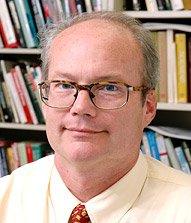제프 킹스턴 교수 기고문
지난 4월 4일, 한국주재 일본대사가 3개월간의 공석(空席) 끝에 결국 서울로 돌아왔다. 서울과 부산에 있는 소녀상을 이유로 아베총리가 그를 불러들였을 때에는 아무도 그가 이렇게 오래 서울을 비우리라고 예측하지 못했다. 그러나 소녀상을 반드시 옮겨야 한다는 메시지를 강력히 전달하고 싶었던 아베의 고집이 그를 오래 붙잡아 둔 것이라 한다.
하지만 애초에 말도 안되는 소녀상 이전을 주장하다가 소녀상 이전은 이루지도 못한 채 일본대사를 돌려보내게 된 아베는 체면이 말이 아니게 되었다. 한반도에 긴장이 고조(高調) 되는 가운데 대통령 교체를 맞고 있는 서울에 오랫동안 대사자리를 공석으로 비워 둔 것은 어차피 만족스러운 결과를 가져오지도 못할 외교문제를 자초하여 스스로 망신만 한 꼴이 되었다.
마침 필자도 같은 날 서울을 방문하게 되었는데, 그 악명높은 소녀상 근처에 호텔이 위치해 있었다. 그러나 소녀상은 일부 일본인들이 주장하듯, 대사관의 평화와 권위를 손상(損傷)하여 비엔나 협정을 위반하는 그런 모습이 전혀 아니었다. 사실 일본대사가 급히 한국을 떠나기 훨씬 전부터 일본 대사관은 그 자리에 없었다. 구관을 허물고 신관을 세우는 공사가 진행중이었기 때문에 소녀상은 경찰차들이 막고 있는 공사현장을 둘러싼 높고 흰 담장 너머를 조용히 바라다 볼 뿐이었다.
소녀상 옆에는 소녀상 철거(撤去)를 막기 위해 매일 하루 24 시간 소녀상을 지키고 있는 젊은이들이 쳐 놓은 텐트가 있었다. 소녀상 뒤로는 소녀상을 방문하는 사람들을 촬영하기 위해 카메라를 들고 있는 경찰이 있었고, 방문객들이 지지의 글을 써서 벽에 붙일 수 있도록 테이블이 마련되어 있었다. 전시 성노예 시스템이라는 위안부의 기억을 싹 지워버리고 싶은 극우주의자들의 눈에는 소녀상이 성가신 존재일지 모르나, 일본인 관광객들, 학생들, 활동가들이 소녀상을 지속적으로 방문하고 있고, 많은 이들이 노란 나비모양의 종이에 남기고 싶은 메시지를 적어 붙이고 있다.
불쌍하게도 나가미네 대사는 자신의 귀환을 환영해 줄 최고위 공직자를 찾기가 어려웠다. 황교안 권한대행은 너무 바쁘고, 외교부 장관도 마찬가지였기 때문에 그는 별 수 없이 임성남 외교부 차관을 만나는 것으로 만족해야 했다. 그 만남에서 그들은 소녀상 문제 및 한반도에 고조되고 있는 긴장에 대해 일본이 가지고 있는 우려에 대해 의견을 교환했는데, 미국의 트럼프 대통령이 북한의 김정은과 위험한 치킨게임을 벌이고 있는 상황에서 후자는 전자에 비견할 바 없이 중대한 문제라 하겠다.
이런 상황에서 일본인 애국자들로 하여금 소녀상에 사정(射精)할 것을 선동하는 저질 블로그를 올린 야수타카 쭈츠이 작가의 행동을 어떻게 해석해야 할까? 소녀상을 “귀엽다”고 하면서 다른 사람들을 선동해서 역겨운 외설행위를 하라고 선동질하는 것은, 소녀상으로는 도저히 끼칠 수도 없는 어마어마한 모욕을 일본인들에게 입히는 행동이다. 사실 이건 비척거리는 80 대 노인이 유명해지고 싶은 욕심에서 내지른 추잡한 헛소리일 뿐이라고 무시해버리고 싶지만, 이미 이 블로그가 인터넷에서 센세이션을 일으키고 있고, 이전에도 그 비슷한 발언으로 논란을 일으키려 한 적이 있다 하니, 과연 그는 고질적인 오색잡놈임에 분명하다.
소녀상을 더럽히는 타락한 환상에 빠져 있는 쭈츠이는, 이 추악한 시스템의 역사를 고쳐 쓰려 하거나, 또는 아베의 감시 아래 일본의 교과서에서 이 역사가 사라져버린 것처럼 아예 이 역사를 지워버리려고 하는 역사 수정주의자들만큼이나 비난 받아 마땅하다. 1993년 고노 담화(河野 談話)를 통해 일본정부는 이 역사를 가르칠 것이라 공언했지만, 지금 그 약속을 저버리고 있다. 또한 일본정부는, 미국 캘리포니아주 글렌데일에 세워진 소녀상을 철거하기 위해 제기된 소송에서 철거를 지지하는 공식 소견서를 미 연방 대법원에 제출하여, 국제사회에서 위안부 문제를 가지고 서로 다투지 않기로 한국정부와 약속한 2015년 위안부 합의를 위반하였다. 더욱이 이런 행동이 일본정부의 공식적 입장을 미국에 알리는 방법이라며 정당화함으로써 또 한번 약속을 어겼다. 미 연방 대법원에서는 상고 신청을 거부하였다.
나는 4 월 5 일, 1992 년부터 계속되고 있는 수요시위에 참석했다. 현수막에는 “일본군 성노예 문제해결을 위한 수요시위”라고 적혀 있었다. 예전에는 많은 성노예 피해자들이 참석했었지만 이제는 건강이 허약해져 거의 참석이 불가능하다. 비가 왔음에도 불구하고, 나가미네 대사가 도착한 날 99 세의 이순덕 할머니가 돌아가시면서 생존자 수가 38 명으로 줄어 평소보다 많은 인원이 참석했다. 초등학생부터 고등학생에 이르기까지 여러 그룹의 학생들과 어느 연예인의 팬클럽에 이르기까지 수백명의 군중이 풍물과 춤이 곁들인 떠들썩한 집회를 이어갔다. 어떤 이는 “과거를 잊은 민족에게 미래는 없다”는 팻말을 들고 있었고, 많은 이들이 한국어, 영어, 일본어로 2015 년 위안부 합의에 반대하는 다양한 팻말을 들고 있었다.
이 집회의 스타는 89 세의 생존자이자, 역동적인 에너지와 낭랑한 목소리로 그 나이를 잊게 하는 이용수 할머니였다. 할머니는 2015 년 합의가 말도 안되는 속임수라고 일축(一蹴) 하며, 대부분 젊은이들로 이루어진 참가자들의 환호 속에 역사를 잊지 말 것을 당부하였다. 어떤 학생들은 자유발언을 통해 위안부 문제를 저버리고 민족을 배신한, 탄핵된 박근혜 대통령에 대한 분노의 목소리를 냈고, 어떤 이는 남한 사회에 팽배해 있는 여성비하 세태에 대한 비난의 목소리를 냈다. 집회가 끝나자 이 강력한 역사의 증인인 이용수 할머니 주변에 모여든 많은 이들은 감정에 북받쳐 울기도 하고 할머니와 사진을 찍기도 했다.
나는 집회 후 이용수 할머니와 함께 이순덕 할머니의 빈소(殯所)를 찾았다. 거기에는 수많은 사람들이 조문을 위해 와 있었고, 미리 와 있었던 반기문 전 유엔사무총장도 이용수 할머니와 잠시 앉아 환담을 나누었다. 나중에 서울에서 90 분가량 떨어진 나눔의 집을 방문하기 위해 이용수 할머니와 함께 밴을 타고 가는 길에 할머니는, 반기문씨가 처음에 2015 년 합의에 대해 환영을 해서 얼마나 분노했었는지 모른다며, 이후 대선에 출마하기 위해 한국에 돌아와서는 또 잽싸게 합의를 비난하더니 나중에는 지지율이 안 나와서 대선출마를 포기하더라는 이야기를 해 주셨다. 다음주에는 이용수 할머니가 겪으신 전설같은 경험담과 시사문제에 대한 관점에 대해 더 자세히 들여다보기로 하자.

Jeff Kingston
director of Asian Studies, Temple University Japan
Abe’s self-inflicted statue wounds fester in Seoul
by Jeff Kingston
Special To The Japan Times
On April 4, Japan’s ambassador to South Korea finally returned to his post in Seoul after a three-month hiatus. Prime Minister Shinzo Abe’s government recalled him in a diplomatic pout over two bronze statues depicting “comfort women”; one is placed close to the Japanese Embassy in Seoul, another adjacent to the consulate in Busan. There were expectations that Ambassador Yasumasa Nagamine would return sooner, but reportedly Abe insisted on prolonging the absence to make sure Seoul got the message about moving the statues.
Instead, Abe face-planted by sending the ambassador back without resolving the statue issue, one that should never have been made into such a big deal in the first place. Not having an ambassador in Seoul during a leadership transition amid heightened tensions on the Korean Peninsula was woeful diplomacy that was never going to solve the problem to Abe’s satisfaction, so he set himself up for this embarrassing pie-in-the-face moment.
By sheer chance I was flying into Seoul the same day, but because I was flying on Korean Airlines, where the maps identify Takeshima as Dokdo and the Sea of Japan as the East Sea, I suspected he was not on my plane. Close to my hotel is the infamous comfort women statue, which I don’t believe violates the Vienna Convention — as some in Japan have claimed — because it has not impaired the peace or dignity of the embassy. As was the case well before Japan’s ambassador left in a huff, there is in fact no embassy at the site. The previous building was demolished and work continues on building a replacement. So the comfort woman statue peers silently across the street at a tall white fence that encloses the construction site, fronted by a phalanx of police buses.
Next to the statue is a transparent tent where young activists mount a 24/7 vigil to prevent its removal. Behind the statue there is almost always a policeman, often with a video camera to record the various visitors to the statue, and a table where people can write notes of support and attach them to an adjacent wall. The statue has a serene expression and it is a peaceful site of remembrance. Her presence might annoy some die-hard revisionists who want to erase the memory of the comfort women system of wartime sexual servitude from the annals of history, but Japanese tourists, students and activists are regular visitors, and many write messages of support on the yellow butterfly-shaped note paper provided.
Pity poor Ambassador Nagamine, who had trouble finding a top official who would agree to welcome him back. Acting President Hwang Kyo-ahn was too busy, as was the foreign minister, so he had to settle for Vice Foreign Minister Lim Sung-nam. When they met they exchanged views about Japan’s statue concerns in addition to tensions on the Korean Peninsula, but the latter seems of a different magnitude and far more urgent given U.S. President Donald Trump’s dangerous game of chicken with North Korean leader Kim Jong Un.
So what to make of author Yasutaka Tsutsui’s undignified blog posting calling on Japanese patriots to go ejaculate on the statue? Calling the statue “cute” and urging others to engage in a disgusting act of public indecency is a far greater affront to the dignity of the Japanese people than the statue ever could be. It is tempting to dismiss the sleazy ravings of a doddering octogenarian as PR hucksterism, but he became an online sensation and says that he has previously tried to stir up controversy with similar rants, so he is a repeat reprobate.
Tsutsui, with his depraved fantasies about desecrating the statue, is as reprehensible as those revisionists who try to rewrite the history of this sordid system or airbrush it out altogether, as has happened in Japan’s secondary school textbooks on Abe’s watch. The Kono Statement of 1993 committed the government to teach about this history, but now it is backtracking from that promise. And the government has violated the 2015 agreement with Seoul on the comfort women by filing an official brief in support of a lawsuit seeking the removal of a similar statue in Glendale, California. The accord called on both governments to refrain from hassling each other internationally over the comfort women, but by supporting the appeal to the U.S. Supreme Court, and justifying this action as a way to get Japan’s official views known in the U.S., Tokyo broke another promise. The Supreme Court declined to hear the appeal.
On April 5, I attended the Wednesday demonstration held every week since 1992 at the site of the statue in Seoul. Banners proclaim it the “Wednesday Demonstration for the Resolution of the Japanese Military Sexual Slavery Issue.” Many of the former comfort women used to attend, but frail health prevents almost all from doing so now. Despite a drizzle, the rally was larger than usual because on the day of Nagamine’s arrival the oldest surviving comfort woman, Lee Soon-deok, 99, died, and now only 38 remain alive. It was a raucous crowd of hundreds, with drumming and dancing, that included several groups of students, ranging from elementary to high schoolers, and even an actor’s fan club. Many held up various signs protesting the 2015 accord in Korean, English and Japanese; one declared, “A nation that forgets its past has no future.”
The star of the rally was Lee Young-soo, 89, a former comfort woman whose dynamic energy and sonorous voice belied her years. She dismissed the 2015 agreement as nonsense and deceitful, and called on the mostly young, rapturous audience not to let this history be forgotten. Some students then took the stage to voice their anger at their impeached president, Park Geun-hye, for betraying the nation by agreeing to abandon the comfort women issue, and to denounce the prevalence of denigrating attitudes towards women in contemporary South Korea. At the end of the rally they flocked around Lee, many overcome with emotion as they posed for pictures with this powerful witness to history.
I accompanied her to the funeral of Lee Soon-deok, where throngs waited to pay their respects, including former U.N. Secretary General Ban Ki-moon, who sat down briefly with Lee Young-soo for some snacks. Later, as I rode in a van with her to visit the House of Sharing, where 10 comfort women now live about 90 minutes outside Seoul, Lee mentioned how she was outraged when Ban initially praised the 2015 accord and then, upon returning to run for president this past January, expediently denounced it before withdrawing from the campaign due to a lack of support. Next week I’ll report more of what she told me about her saga and her views on contemporary events.
Jeff Kingston is the director of Asian Studies, Temple University Japan.
Jeff Kingston is Director of Asian Studies, Temple University (Japan Campus) and a Japan Focus associate. He is the author of “Burma’s Despair,” Critical Asian Studies, 40:1 (March 2008), 3-43, several recent articles on East Timor, and Japan’s Quiet Transformation: Social Change and Civil Society in the 21st Century (Routledge, 2004). He also is the editor of Natural Disaster and Nuclear Crisis in Japan: Response and Recovery after Japan’s 3/11, Routledge 2012. He is the author of Contemporary Japan. (2ndedition), London:Wiley 2013 and Nationalism in Asia: A History Since 1945 (Wiley-Blackwell, 2016).

























